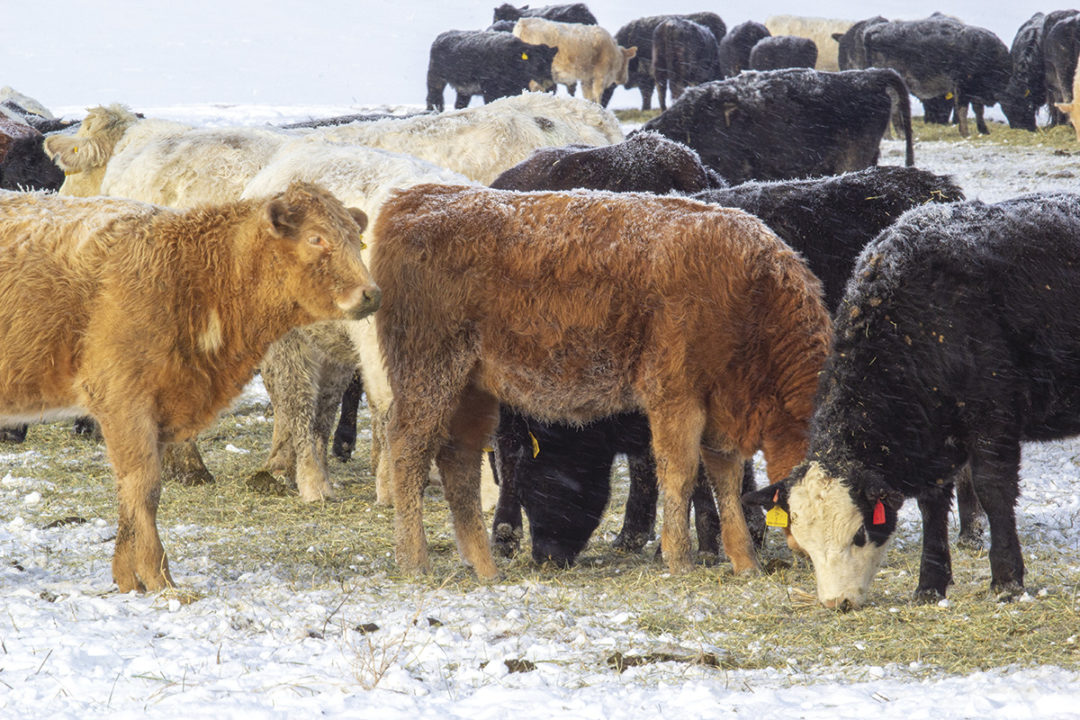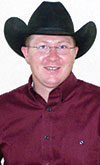For some cattle producers, depending on locale, drought is an expected and reoccurring event that is part of the management environment. Others are fortunate to operate in areas that typically receive more annual precipitation and as a result, experience dry conditions less frequently. Regardless of one’s familiarity and experience level, managing forages for use in beef cattle feeding scenarios under drought conditions can be complex and challenging due to a multitude of different factors. The objective of this discussion is to address some of those factors and provide relevant information regarding drought mitigation as it relates to forage and feedstuff management. This article is a summary of information presented in a recent series of producer meetings held throughout Kansas by Kansas State University research and extension professionals. Click here for more information and meeting recordings.
The importance of planning and looking ahead
The lack of precipitation in many areas this year has proven to be very challenging. Unless conditions change quickly, the prospects of receiving considerable drought-alleviating moisture over the next two to three months for producers across the Great Plains generally appear low. Managing drought is about having a sound plan in place that focuses on both short- and long-term needs of the operation. Being steadfast and working through the strategy diligently enables more-informed decision-making. Likewise, it is important to remain flexible and open to new opportunities as they are presented.
The already low hay stocks at the beginning of 2022 have been further reduced by the lack of rainfall. Compound this with high purchase prices for other feed ingredients and inputs, and there are few easily identifiable solutions for producers. If forage for fall and winter grazing is limited, then the importance of knowing one’s harvested feed supply and making sure it matches cattle herd inventories cannot be overemphasized. It is critical for producers to assess current forage supplies and secure additional hay and forages that may be necessary to feed well into the spring. With little winter precipitation, spring grass production will likely be low and delayed. Therefore, it is essential for producers to understand what the key forage production cutoff dates are for their areas, which helps in making more proactive, timely decisions regarding cattle turnout and stocking rate.
Now is the time of year when culling decisions regarding spring-calving cows are typically made, and many of those rulings on which females to retain may have already been done earlier than normal. For fall calvers, this may be a year to implement effective drought management strategies, including early pregnancy diagnosis – for both replacement heifers and mature cows – and early calf weaning. Early weaning is perhaps the most useful drought strategy regarding forage management due to the reduction in forage intake by approximately 30% to 40% by ceasing cow lactation and removal of the calf. If you anticipate delaying turnout or reducing stocking rate next spring, take time to review which groups of cattle are most easily and economically managed and fed in an alternative setting. Regardless of calving season, understand the importance of nutrition around the time of calving and the magnitude it has on subsequent reproductive performance and calf health.
Supplementation vs. substitution
We typically associate supplementation of grazing beef cattle with forage that is deficient in protein content. However, as is the case during drought, if intake from grazed forages is limited, our focus with supplementation must be on both protein and energy. Likewise, supplementation of both nutrients with a feedstuff that provides ruminal fill to reduce forage dry matter intake (DMI) can be a method of substitution to reduce intake of grazed forages. Thus, carrying capacity can be extended, ultimately aiding pasture or range condition and productivity, which is normally hindered during drought. Understanding the goal of the supplementation or substitution program is key in determining what will be fed and how it is best managed. Compare feedstuffs based on cost per unit of nutrients and consider the different labor, equipment and handling needs.
Forage sampling
Sampling forages and feedstuffs to determine nutrient composition is always advised when evaluating nutrition programs. But when forages are scarce and expensive, the importance is even greater. Certainly, having laboratory test results provides significant value for the purposes of establishing a fair market value for forages and feeds. However, during drought conditions, many forages may be used in nutrition programs for beef cattle at much higher dietary levels than typically done. Thus, the need to avoid ration formulation error is substantial and further emphasizes the need for accurate sampling. This fall and winter, many producers may be feeding forages they usually don’t, including failed corn, soybeans or grain sorghum crops, as well as crop residues. These forages may also contain significant amounts of weeds, and the form of these forages (silage or hay) and conditions at the time of harvest can markedly affect the feeding value.
The risk of toxicity to cattle from either nitrates or hydrocyanic (prussic) acid is greater during drought conditions, although there are numerous stressors that can cause levels of both compounds to accumulate in forages. Nitrate and prussic acid toxicity are two distinct conditions, yet in both the animal does not receive oxygen at the cellular level, ultimately resulting in asphyxiation. There are many plant species that can accumulate only nitrates, some that can accrue only prussic acid and some that can accumulate both. Only plants that contain dhurrin (a precursor) can produce prussic acid; these primarily include sorghums, sudangrass, sorghum-sudan hybrids and other related species. There are critical differences between these conditions regarding plant physiology that dictate our approach to management and sampling. For example, although allowing sufficient time for curing after cutting will reduce the amount of prussic acid in a forage, nitrates will remain in dry hay. Ensiling can reduce both compounds. These compounds can be analyzed for by commercial laboratories, and forages containing either can be incorporated in beef cattle nutrition programs in a safe and judicious manner.
Limit-feeding
The practice of restricted intake feeding is well established for targeting rate of gain on growing cattle, but cows and young calves can also perform well on a similar program provided that facilities, bunk space and feeding equipment are not limited. In a limit-fed program, it is advised to provide at least 24 inches of linear bunk space for cows and 36 inches per cow-calf pair. Regarding low forage supplies, limit-feeding is effective in reducing the total amount of forage fed in a ration, but additional nutrient-dense feedstuffs must be incorporated to provide sufficient energy and protein to the animal to account for the reduction in total daily intake. Temporarily placing cows and calves in a custom feedyard to offer care and feed until conditions improve may be a logical option for some producers, as long as costs and expectations are clearly communicated between parties.
Drought mitigation for the cow-calf enterprise is about managing risks and balancing short-term needs with long-term goals. Take time to assess your forage inventory now for both quantity and quality, understand your needs and limitations, develop a plan and manage it accordingly. Local extension professionals can help provide further resources, guidance and expertise for cattle producers continuing to navigate challenging conditions.
Sandy Johnson, Justin Waggoner, Dale Blasi, A.J. Tarpoff and Jaymelynn Farney are all part of the extension beef team with Kansas State University.











